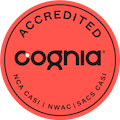Summer internship opportunities for high school students
At 2Sigma School, we believe that internships can benefit high school students in some critical ways.
Gain Real-World Experience: Internships allow students to gain real-world experience in a specific field of interest. They can see firsthand what it's like to work in a professional environment and apply what they've learned in the classroom to real-world situations.
Develop Skills: Internships allow students to develop or enhance new skills. They can learn valuable technical and soft skills to help them in future jobs.
Networking: Internships allow students to meet and connect with professionals in their field of interest. Building these relationships can lead to future job opportunities or mentorship.
Explore Career Options: Internships allow students to explore different career options before committing to a specific career path. This can help them make more informed decisions about their future.
Resume Building: Internships look great on a resume and can set students apart from other applicants when applying for future jobs or colleges.
However, finding internships can be challenging for high school students for several reasons:
Lack of Experience: High school students often lack the necessary experience and skills employers look for in interns, making it harder to find internships.
Limited Connections: High school students lack networks or connections, making it harder to find internship opportunities.
Competitiveness: Internships are highly competitive, with many applicants vying for a limited number of positions.
Legal Restrictions: There may be legal restrictions on the type of work that high school students can do as interns, limiting their opportunities.
Below, we list some opportunities that have crossed our radar. We do not endorse or otherwise validate them, but we list some reputable resources here for you to consider.
If you find other resources you would like us to publish, please let us know.

Aviation Systems Division Concept Design Experience for High School Students
Brief Description
Learn about the exciting aerospace opportunities within the Aviation Systems Division at Ames Research Center in the heart of Silicon Valley. Develop and propose an aviation concept or application to help solve a current or future “wicked” real-world problem. Gain experience and expand your NASA aerospace networks in a professional virtual team environment.
Virtual teams will comprise 6 students and 2 NASA mentors. Students will use personal computers to connect virtually with team members using mutually agreed upon communication and collaboration tools such as Google Workspace, Slack, Zoom/ MS Teams, and email. NASA mentors will routinely tag-up with student teams at least weekly to offer guidance on team progress and identify NASA Subject Matter Experts to consult. Student teams will determine their own meeting schedule and learn to conduct effective meetings fostering inclusion, accountability, and productivity.
US Citizens Only
Grades: 9-11
Register by: 09/15/2023
Virtual

AI & ML for Air Traffic Management
Brief Description
This project explores the use of innovative and emerging applications of AI/ML (e.g., Natural Language Processing) to digitize and analyze heritage air traffic management (ATM) datasets. Given the rich volume of available text, audio and track data and the complexity of the problem space, this is an ideal candidate for the application of machine learning. The research is focused on harvesting semi-structured or unstructured information contained in Letters of Agreement (LOAs) and enabling automation (e.g., Traffic flow management) by extracting and sharing the digitized information. This information will be used by various National Airspace System (NAS) users to optimize current day flight operations e.g., to perform runway configuration management and analyze Traffic Management Initiatives (TMIs). The work will help build semi-automated recommender services that can assist complex decision making currently made by FAA specialists and subject matter experts.
Interns will develop a project plan with scope, milestones, and deliverables to construct a data pipeline that finds language patterns for classification and extraction of useful data. Interns will work collaboratively with NASA personnel and other government organizations.
US Citizens Only
Grades: 11-12
In-person / Virtual




